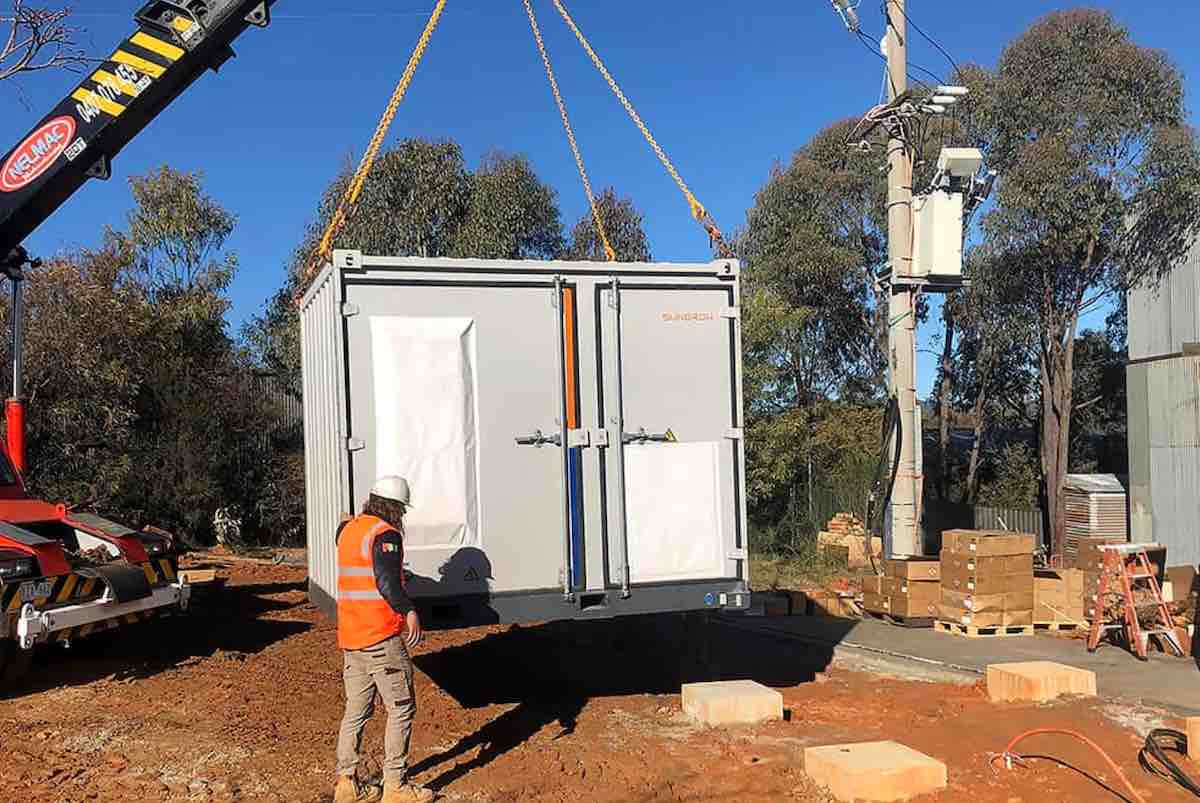Electricity distribution companies increasingly count batteries as a fundamental part of their poles and wires ecosystems, often performing network services better than traditional kit – and at significantly less cost to consumers.
This is the message delivered to Australian Energy Week by Greg Hannan, the head of network strategy and non-network solutions at CitiPower Powercor and United Energy, the DNSPs running the bulk of Victoria’s poles and wires.
It’s a message heard more and more often; that batteries are the Jack of All Trades, the Swiss Army knives of modern energy systems, able to perform a broad array of tasks and squeeze even more value out of already cheap renewables.
“In terms of … what are we doing on the distributed storage side, our fundamental view is that there is actually now a critical need for storage,” Hannan told the conference on Wednesday.
“We’re now starting to see storage as part of the fundamental energy ecosystem.”
For example, he adds, “as we … exhaust some of the cheaper options to maintain the voltage profile, there’ll be some pockets in the network where batteries can play a role to effectively support local voltages.
“We’re looking at a future where potentially batteries can actually provide a cheaper alternative to the traditional network service. And in that case … customers will actually be better off.”
The fact is, it’s tough to find anyone anywhere to argue against an increased roll-out of batteries of all shapes, sizes and chemistries on all parts of the grid, from big batteries at old coal plants to Tesla Powerwalls in peoples’ homes.
But in the context of front-of-meter or grid-side batteries, it starts to get complicated. In particular, the jury is still out over whether regulated monopolies should be allowed in on the game – and in what capacity.
Under normal ring fencing rules, overseen by the Australian Energy Regulator to avoid distortion in competitive markets, DNSPs – being regulated monopolies – are not allowed own and operate community batteries.
Earlier this year, however, the AER awarded network companies limited rights to own and operate community batteries, giving them access to federal Labor’s Community Batteries scheme; a $224 million funding initiative to install “shared” storage across the National Electricity Market.
Critics of the move, like Nexa Advisory’s Stephanie Bashir, argue that full value stack of grid-side community batteries can only be realised through third-party or community owned models.
Network ownership and operation of batteries, Bashir says, will likely squash competition and innovation in what is a new and evolving market.
But Hannan says DNSPs have no interest monopolising the battery business – and even less interest in squashing innovation, which after all is cutting network costs and making the job of distributing energy easier.
“We’re supportive of a range of business models,” he told Australian Energy Week on Tuesday.
“We’re actually required to procure least-cost network services. So someone who’s got a battery that targets constraint, and you can deliver it to us and we can contract with you for that battery at the times when we need it … and that’s cheaper, that’s what we will do.
On the other hand, “if our business has the capacity to to deploy storage that can benefit customers, defer network augmentation and ultimately deliver lower network service costs for all customers … we just don’t want to be frozen out of that, basically,” he adds.
“Our business is not supporting … a monopoly distributor-led roll-out of batteries. What we’re saying is that, we know that these assets can do multiple things across different value streams.
“It’s almost the case where if someone can deploy storage and do it efficiently and you know, safely… well, then … the regulatory framework should support that.”
But Hannan also argues that in some cases, it will make more sense for DNSPs to develop projects, particularly when it comes to keeping down costs.
“We can we can fund [a] battery by targeting a network constraint. So, rather than you know, putting in a new … transformer … we can we can avoid that investment and put the battery there in its place.
“We can then you know, lease the battery to a retailer so that the retailer gets access to that storage capacity and they can … take advantage of that capacity in the wholesale markets.
“What we’re hoping in the near future is that … we can actually do these projects, target that network constraint, and actually … not need any sort of top-up funding from grants. And, you know, that’s quite an exciting future.
“A lot of the value is going to be outside of the periods when the network doesn’t need the battery for its own network support reasons,” Hannan adds.
“That’s why, if we can deploy the storage and do it well and affordably and at least cost … we just don’t think we should be frozen out of that.
“And where it makes sense for someone else to do that on our behalf and sell us the network service product … we’ll consider that and we will buy that product as well.”








